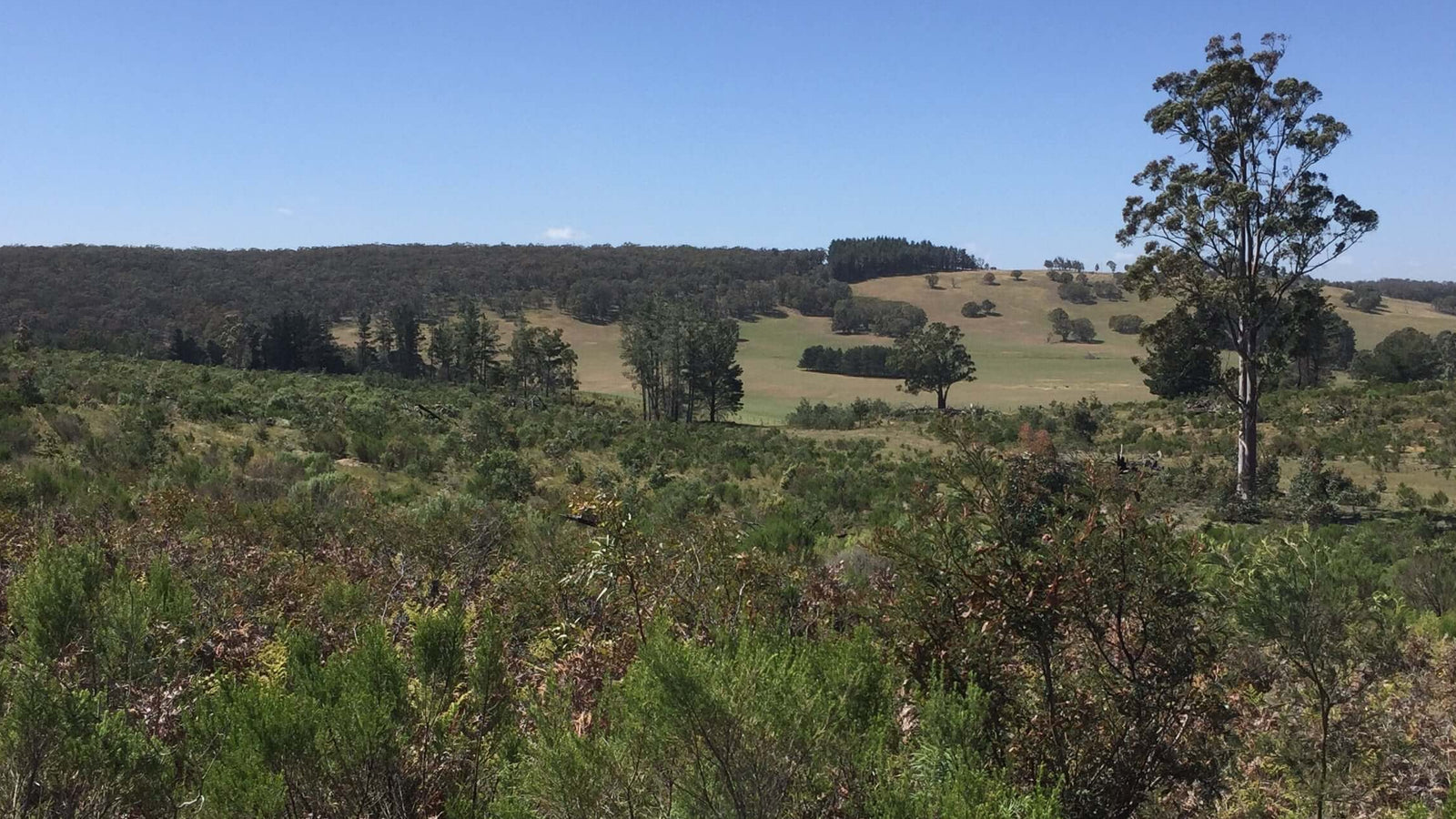Back O’Slaters is located on Gundungurra and Dharug Country, in Taralga, NSW. With the property previously being used for farmland, this project demonstrates Greenfleet’s commitment to long term climate action and ecosystem restoration. We first planted at Back O’Slaters in 2017 and returned in 2024 to revegetate areas impacted by fire and extending a section of existing forest, adding to our environmental impact.
Reflecting on the project, owners Andrew and Beverley Moore are proud of their decision to work with Greenfleet.
“The planting process was very positive, and I was particularly impressed with Greenfleet contracting the work to a reputable nursery in the area, which employed good, passionate people for the labour, and treated them well,” Andrew said. “It has been really cost effective for us, and it’s good to be doing something for the environment.”
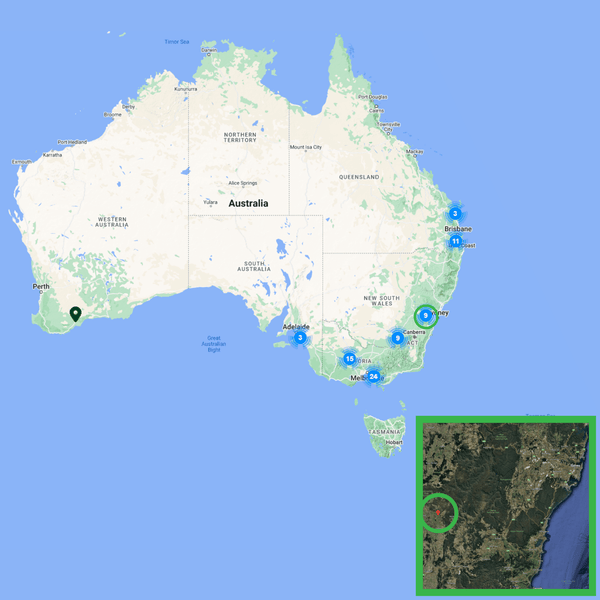
Location & Map
This property is on the lands of Gundungurra and Dharug peoples, north of Canberra in the Southern Tablelands of NSW.
For over 150 years Back O’Slaters has been worked as farmland. The planting of native vegetation will provide habitat for local wildlife, restore biodiversity in the region and deliver climate action.
This is one of many native reforestation projects that Greenfleet has undertaken in New South Wales since 1997. To see where some of our other projects are growing, you can explore our forest map here.
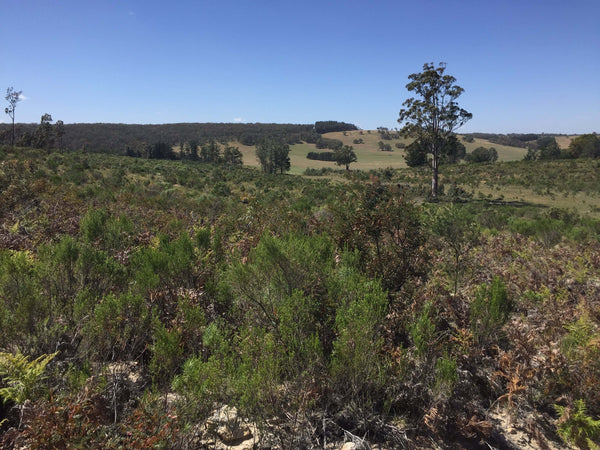
Species Selection & Revegetation Approach
The initial revegetation work in 2017 saw Greenfleet planting more than 46,000 trees across 60 hectares, restoring 26 locally native species. Further monitoring across successive years showed the trees were thriving and carbon sequestered.
The silver banksia (Banksia Marginata) and black sheoak (Allocasuarina littoralis) planted produce nuts which are food for the yellow-tailed black cockatoos that frequent this forest.
The manna gums (Eucalyptus viminalis) planted on the site can grow up to 50m tall and its leaves provide food for koalas and other animals, while its height provides them a safe home high off the ground. The ten species of acacias planted include the black wattle (Acacia mearnsii) which has crevices in its bark, creating homes for insects including butterflies and invertebrates such as wood moth grubs. Its yellow flowers bring pollen-feeding birds such as wattlebirds, yellow-throated honeyeaters and New Holland honeyeaters.
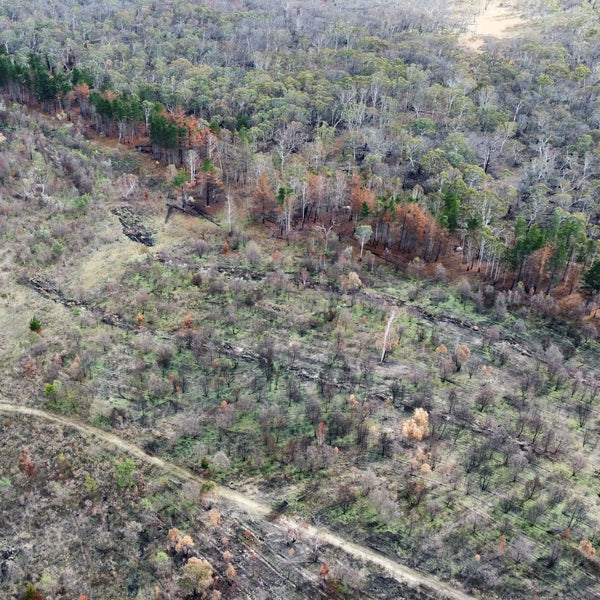
Resilience of Native Forests
In March 2023, a second bushfire severely burned parts the forest.
When fire burns a forest, it can take up to 12 months to reseed. Even 10-year-old trees are vulnerable to an extreme fire and may not survive.
Greenfleet returned to Back O’Slaters in 2024, demonstrating our long-term approach to native reforestation and climate action.
While much of the burned area was resilient to the fire, the areas that did not recover naturally were replanted. When the landholders learned of this commitment, they requested additional areas also be restored, bringing the total planting to 77 hectares.
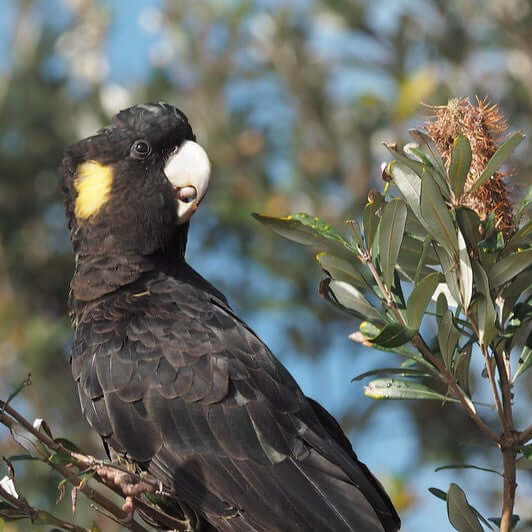
Wildlife Habitat Restoration
While delivering climate action by removing carbon, the forest at Back O’Slater is also providing habitat to local wildlife.
Yellow-tailed black cockatoos already frequent the forest. These large birds eat the nuts of the silver banksia (Banksia Marginata) and black sheoak (Allocasuarina littoralis) trees which we planted in 2017. They like to make their nests in large hollows found up high in old growth native trees. Tree hollows can take decades to form which is why Greenfleet legally protects our revegetation projects for up to 100 years.
Eleven different species of Eucalypt were planted to provide food and habitat for arboreal mammals, such as the local possum populations. Species like this also benefit from tree-hollows which can form in Eucalypts that are hundreds of years old. This is another reason Greenfleet legally protects our forests, to ensure we are delivering benefits like this into the future.
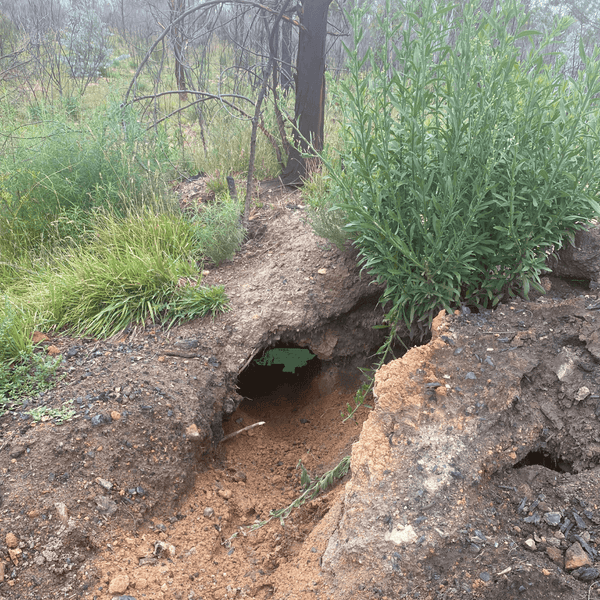
In 2024, Greenfleet’s Revegetation Team also observed activity of local bare-nosed wombats, as seen by this freshly excavated wombat burrow. This wombat species is most common in New South Wales and prefers to create its burrow in mainly wet, partly forested areas. Eastern grey kangaroos and wallabies have also been seen on the site.
Greenfleet planted ten species of acacias to provide food and habitat to a very wide range of insects, birds, and mammals.
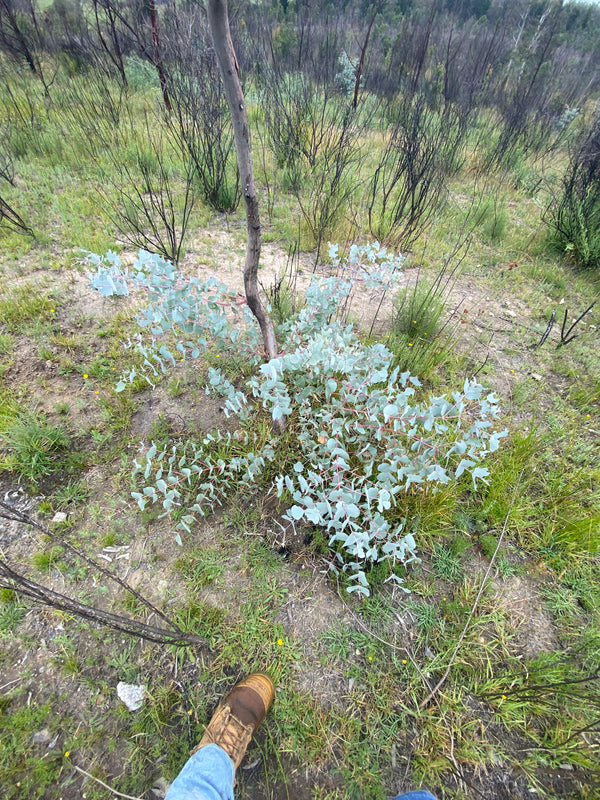
Climate Action
The forest growing at Back O’Slaters is legally protected for 100 years to deliver long-term climate action and environmental benefits. Over that time, it will capture over 130,000 tonnes of carbon from the atmosphere which is the equivalent to removing around 30,000 average vehicles from Australia’s roads for a whole year.
Greenfleet uses the Full Carbon Account Model (FullCAM) to measure the carbon uptake at our revegetation sites. This model was developed by the CSIRO and is approved by the Department of Climate Change, Energy, the Environment and Water.
Location
77 hectares near Taralga, NSW
Planting Dates
2017 & 2024
Species
- Black gum (Eucalyptus aggregata)
- Black sallee (Eucalyptus stellulata)
- Black sheoak (Allocasuarina littoralis)
- Black wattle (Acacia mearnsii)
- Blackwood (Acacia melanoxylon)
- Brittle gum (Eucalyptus mannifera)
- Broad leaf Peppermint (Eucalyptus dives)
- Brown barrel (Eucalyptus fastigata)
- Burgan (Kunzea ericoides)
- Candlebark (Eucalyptus rubida)
- Early black wattle (Acacia decurrens)
- Manna gum (Eucalyptus viminalis)
- Mountain gum (Eucalyptus dalrympleana)
- Myrtle tea-tree (Leptospermum myrtifolium)
- Narrow-leaf peppermint (Eucalyptus radiata)
- Prickly tea-tree (Leptospermum continentale)
- Red-stemmed wattle (Acacia rubida)
- Red stringbark (Eucalyptus macroryncha)
- River bottlebrush (Callistomon sieberi)
- River tea-ree (Leptospermum obovatum)
- Silver banksia (Banksia marginata)
- Silver wattle (Acacia dealbata)
- Snow gum (Eucalyptus pauciflora)
- Sunshine wattle (Acacia terminalis)
- Sweet bursaria (Bursaria spinosa)
- Tantoon (Leptospermum polygalifolium)


